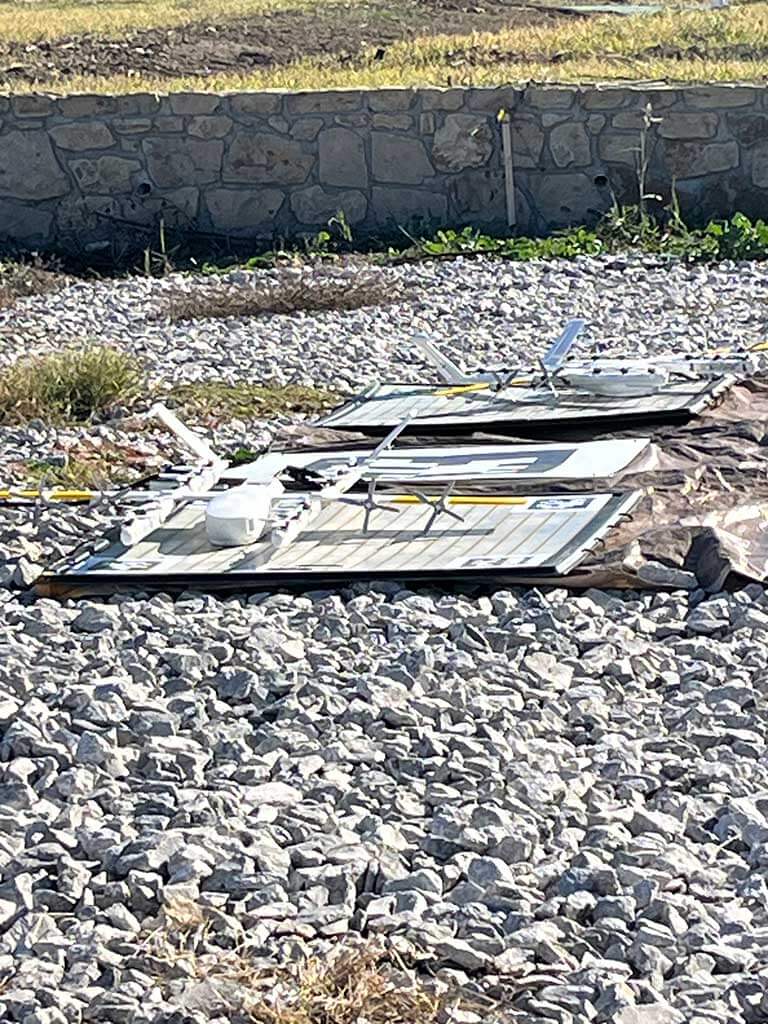Have you heard about the Meta-Standard or Risk-Based Safety Tiers for Beyond Visual Line of Sight (BVLOS) uncrewed aircraft system (UAS) operations? As the Federal Aviation Administration (FAA) advances toward releasing its long-anticipated Part 108 Notice of Public Rulemaking (NPRM) for BVLOS UAS ops, industry stakeholders continue working with ASTM International to develop the standards that will enable these operations at scale. This article captures some of the key insights from the critical ASTM-led conversation at XPONENTIAL 2025 around the motivations, methodologies and challenges that frame this ongoing effort.

The Foundation: Standards To Support Emerging FAA Regulations
Some of the leading experts in the industry—Mark Blanks, Wing; Jenn Player, Skydio; Jim O’Sullivan, Door Dash; Peter Sachs, Zipline and moderated by Phil Kenul, ASTM International—supported the XPO25 panel. Each individual represented a unique slice of the UAS ecosystem. Together, they explored the standards development roadmap that will support the anticipated NPRM.
The high level takeaway: ASTM’s efforts are not just technical or bureaucratic; they are foundational to enable a future where BVLOS operations are safe, scalable and seamlessly integrated into national airspace. These standards will be critical to ensure both safety and innovation in a future shaped by increasingly autonomous aircraft, new classes of remote operators and expanding commercial use cases.
Strategic Standards Development: Setting the Stage for Part 108
ASTM has tightly aligned its standards development with the expected themes in the FAA’s BVLOS NPRM for Part 108. These will likely focus on: airworthiness, detect-and-avoid (DAA) capabilities, operational safety and command and control (C2) reliability. ASTM developed its standards development strategy focused on these issues in both a comprehensive and anticipatory manner.
According to Blanks from Wing, ASTM designed its approach to be flexible yet rigorous—balancing regulatory needs with the fast-paced evolution of BVLOS technologies. It seeks to prepare the UAS industry for what is expected in the NPRM. The strategy includes:
- Defining precise scopes for each standard under development
- Establishing realistic development timelines
- Enlisting a broad base of subject matter experts and stakeholders
The strategy also involves extensive coordination with other Standards Development Organizations (SDOs) to avoid duplication and ensure global compatibility.
Blanks underscored ASTM’s proactive positioning: to be ready before the rule lands—not after— and build standards that are robust enough to satisfy regulators and adaptable enough to stay relevant.
Understanding the BVLOS Landscape: Gaps, Needs and Priorities
New standards development begins where current standards fall short. Door Dash’s O’Sullivan noted that while some existing frameworks—for example, those addressing airworthiness or operational risk—can be partially adapted for BVLOS, many remain inadequate, especially when transitioning from experimental to routine operations.
To address this, ASTM will create a “Meta-Standard”—a central reference framework designed to help applicants and original equipment manufacturers (OEMs) find the applicable standards across different ASTM documents.
Skydio’s Player explained that instead of ASTM creating entirely new standards from scratch, the Meta-Standard would aggregate existing requirements and clarify how they apply within the BVLOS context. This would provide a turnkey compliance pathway for operators and developers to enhance both usability and transparency
Performance-Based Standards and Global Harmonization
The FAA has indicated the NPRM will embrace performance-based standards. These will not consist of rigid checklists, but rather adaptable frameworks that define what needs to be achieved rather than how to achieve it. This approach particularly suits rapidly evolving technologies like UAS.
Performance-based standards help future-proof regulations by ensuring they remain applicable as technology advances. Such standards also offer regulators a flexible toolset to evaluate compliance in a variety of operational contexts.
Zipline’s Sachs highlighted that Transport Canada (TC) has already adopted ASTM standards for low-risk BVLOS operations. This move underscores the viability of using consensus-based standards to accelerate regulatory approval. Sachs noted that global harmonization—anchored by shared references like JARUS SORA v2.5—is not just aspirational but necessary for market growth.
ASTM’s development of risk-based safety tiers may have been one of the more innovative proposals discussed. Rather than relying solely on weight classes or aircraft categories, ASTM, with industry, continues to explore breakpoints based on risk exposure—Low, Medium, and High Levels of Assurance.
This stratified approach offers flexibility to OEMs, system integrators and operators. It allows each stakeholder to align with an appropriate level of regulatory scrutiny while maintaining safety. According to Player, this model would streamline implementation and could also serve as a model for how other sectors approach emerging aviation technologies.

Airworthiness and Operator Readiness
O’Sullivan emphasized that airworthiness remains one of the most critical areas requiring new or revised standards. Traditional aviation standards do not always work for unmanned, remotely piloted systems operating without direct line-of-sight.
O’Sullivan pointed to several unique BVLOS challenges for UAS:
- The need for robust C2 links
- Redundant systems for navigation and collision avoidance
- Environmental resilience for diverse geographies
Additionally, Sachs stressed the importance of developing standards that ensure operators are equipped with the right training and skills. BVLOS operations often involve higher levels of autonomy and decision-making, making human-machine interaction a vital area for standardization.
ASTM’s Role in Regulatory Alignment
ASTM stands uniquely positioned to bridge the gap between regulatory intent and technical implementation. By maintaining close dialogue with the FAA, the organization ensures that its standards align with the agency’s priorities.
Blanks highlighted ASTM’s history of adapting standards from other aviation sectors—such as F-37’s Continued Operational Safety standard—and reconfiguring them for UAS. This cross-pollination results in faster development and easier adoption.
Moreover, ASTM’s consensus-based process allows all stakeholders—OEMs, operators, software developers and regulators—to participate. This ensures a diversity of viewpoints that bolster technical robustness.
The Road Ahead: Key Milestones and Community Engagement
Looking forward, the panel laid out several milestones for the next 12 to 24 months, including:
- Finalization of the BVLOS Meta-Standard
- Publication of foundational performance-based standards
- Coordination with FAA for recognition and alignment under Part 108
- Expansion of global outreach to harmonize with international frameworks
Closing Thoughts: Collaboration is the Cornerstone
As the FAA prepares to roll out Part 108, proactive, collaborative and adaptable standards will act as enablers of innovation, safety and public trust in the next generation of aviation. ASTM will play a big role in its success.
The safe and scalable integration of BVLOS operations into the national airspace depends on robust, flexible standards. In that process, industry collaboration is not optional—it’s essential. In closing, the panel issued a call to action for industry professionals to get involved.
As Blanks remarked, “Standard development is a huge investment, but the return is a safer, scalable and more innovative ecosystem. That’s something worth building together.”
ASTM’s approach provides the infrastructure, but the community must bring insight, commitment and creativity. ASTM’s current engagement with all stakeholders is not just technical—it’s strategic. ASTM wants to give the FAA confidence that the industry is ready to meet the moment. This involves aligning ASTM’s standards directly with FAA goals, while also promoting international harmonization through coordination with JARUS and other global bodies.
With the right strategy and participation, the standards being developed today will define the future of UAS operations in the U.S…and beyond.

